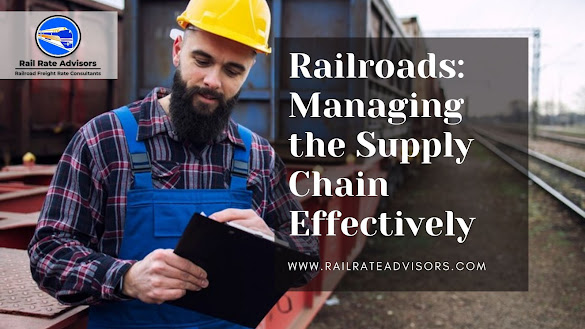How to Properly Negotiate Rail Freight Rates
Learning how railways charge your commodities is an excellent place to start when it comes to negotiating rail freight rates. Railway price has fluctuated between official tariffs and private organizations over the years. Price regulation allows railroads to charge varying rail freight rates to multiple merchants in the same lane. Here are some tips to determine how to negotiate rail freight rates properly.
Understand How Freight Rates Are Set
The
Revenue-to-Variable-Cost ratio is the most critical ratio to comprehend when it
comes to identifying how rates are established. The RVC is calculated by
dividing a railroad's income by the lane's operational cost. When negotiating
rail freight rates, corporations want to increase their RVCs. This information
can serve as a catalyst and a benchmark for your rates. This can help you
determine whether your charges are reasonable for your goods and whether you
might be able to negotiate rail freight rates.
Pick Out Chances
You may evaluate your
rates using detailed data on train rates across routes and goods. You'll know
where to begin negotiating rail freight rates based on these estimations.
Data visibility will not only reveal to you where your prices are too high but also where you stand in comparison with other industries. Rail Rate Advisors can help you evaluate the information and analyze your rates using RVC ratios. You can uncover negotiation possibilities by studying outliers.
Judge Your Options
When you only get a
few options, it's hard to negotiate. You'll be in a better bargaining position
if you fully comprehend all of your options. A single rail carrier includes
nearly 70% of rail-served sites. You do, however, have alternatives even if
you're working on a captive route. Take into account the following:
Alternative paths are available: If your rail freight rates are significantly higher than those of your rivals, you may be ready to bargain for a cheaper rate over large distances.
Different Modes: Rail freight is often less expensive than truck shipment, but it's always a smart option to acquire a quote. If your rail carrier refuses to compromise your tariffs, this may give you other options.
Deal with Your Operations Efficiently
As you may assume, merchants who routinely experience high ancillary costs and financing costs and don't fix fleet management concerns will pay much higher rail freight rates. However, Users who pay on time, hold a strong fleet, handle freight cars on schedule, and execute activities effectively, will have a superior negotiation position. Consider implementing warehousing or capital upgrades to enhance your procedure if you've encountered managerial issues in the past. Use a railcar surveillance scheme to maintain track of hazards and how to fix them. Use your experience managing your business for several years in your negotiations.
In Short
Rail Rate Advisors
makes it simple to comprehend railway pricing by-product, assess your
railroad's market share, and determine "fair prices" in every
specific route. We also assist you in gaining access to valuable data,
expertise, and assistance so that you may be more productive in your rate
agreements.




Comments
Post a Comment